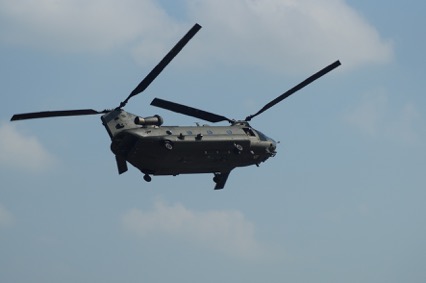Australia’s first certified flame-retardant polyurea coating
The economic impact of corrosion is often exacerbated in harsh climatic environments and in workplaces with heavy traffic wear from operation of large vehicles and equipment. Excessive moisture, heat and abrasion can accelerate the deterioration of machinery, vehicles and assets. Applying a protective surface coating is one way of minimising or reducing the effect.
One coating material for harsh conditions—including those in a combat zone—supplied by Rhino Linings Australia (RLA) is Rhino Extreme 11-50 FR. While the material has been available for several years, it was only late in 2016 that the fire resistant nature of the product received certification.
RLA’s Technical Manager, Robert Idzes, said “The formal certification of Rhino Extreme 11-50 FR has opened up a range of new opportunities for industrial and commercial applications of the product.”
The spray-applied pure polyurea is suitable for any application, such as a fuel bund—secondary containment area—that requires a fire resistant surface. Historically, bunds have been constructed of concrete or brick, but in recent years have been coated with a spray-applied pure polyurea or welded plastic liner to prevent leaks.
Fire is a potential hazard if a leak does occur, especially where fuel, sodium hydroxide, sulphuric acid and other highly flammable materials are stored. The flame resistant properties of Rhino Extreme 11-50 FR significantly reduces the burn rate allowing safety officers and staff time to extinguish the flames before major damage is caused to the liner or catastrophic failure occurs.
“The Rhino Extreme 11-50 FR is the latest Flame Retardant product to meet US Federal Aviation Regulation 25 (FAR 25) Flammability testing for aircraft,” said Denis Baker, Special Projects Engineer at RLA. “In addition, it also meets UL 94, which is another high standard at the moment for coatings.” The FAR 25.853 tests the self-extinguishing performance of materials under fire conditions.
In addition, due its excellent blast mitigation properties—arising from the high tensile and elastic elongation properties of the Rhino Extreme polyurea which enable it to contain and minimise shrapnel damage—the product can be used for military applications. Barracks, tactical vehicles, temporary structures and buildings can be protected from damage.
It can also be used on vehicles and equipment requiring abrasion, corrosion and impact protection and when applied with a textured finish (R10 dry slip resistant rating) it is ideal for foot traffic areas requiring a non-slip surface.
Mixed in a 1:1 ratio, the material is a two-part, flame retardant, elastomeric, polyurea. The product’s flame resistance makes it an ideal coating for numerous applications that require a flammability rating, all the more important as fire regulations become more stringent.
However, due to the range of substrates—metals, wood, concrete, fibreglass, geotextiles and most plastics—to which the Rhino Extreme polyurea can be applied and the numerous flammability ratings, RLA recommends that testing, certification and approval be considered prior to any application of a coating.
How much flame retardence provided is dependent upon the substrate being coated and the polyurea’s thickness and density. Spray application means that a monolithic, seamless lining is created that conforms to any shape and size.
In a refinery, concrete flooring was sufficient in the past but many now require easy to clean, seamless leak proof floors to minimise dust build up, making 11-50 FR an ideal material to use. Applied to an appropriate thickness, the polyurea coating can withstand tracked vehicle traffic, forklift operations and heavy loads and reduces noise from vibration and impact.
However, Idzes added that because of the range of substrates, customers should test a small section to determine the suitability of these products for their own particular application.
RLA produces a range of spray-applied polymer surface treatments that are able to meet the demands of the variable Australian climate combined with the often harsh working environments of construction sites, oil rigs and remote Australian mining facilities. According to Peter Morgan, General Manager of RLA, despite challenging economic conditions, his company has experienced strong growth throughout Australasia.




